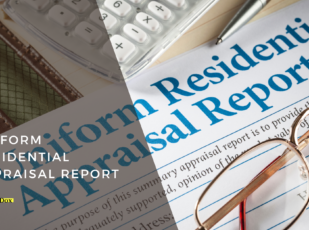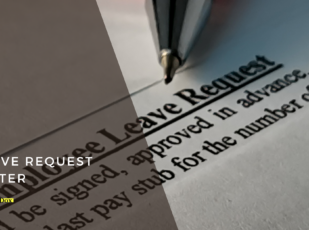
Roommate Agreement Template
6 Downloads
Real Estate
December 8, 2024
Sayantani Dutta
Millions of people live in communal residences. There are dozens of reasons why people choose this lifestyle, with the rising cost of living in cities like New York and LA being a prime example. It’s way cheaper to move into a room in a shared house than pay for a studio apartment.
If you’ve decided to open your home to roommates or you’re just a college student looking to lay some ground rules for your dorm room, a roommate agreement defines the etiquette guidelines for communal living situations. You might have the happy vision of your shared house turning into an episode of Friends, but you could end up getting the worst roommate ever instead.
The roommate agreement protects you and the rest of the housemates from the risk of letting someone move into the property, which disrupts the dynamic and makes everyone’s lives hell. It’s also handy for just keeping everyone in line and ensuring that the house doesn’t turn into a pigsty or stay up making tons of noise at night while everyone else is trying to get some sleep before the workday starts.
The roommate clearly outlines the obligations the roommates have to keep the house clean and in order. It’s also the handbook for acceptable and restricted behaviors in the house. It clearly states the disciplinary actions housemates can expect for disrespecting others when they cross those boundaries.
Everyone in the house signs the roommate agreement and agrees to live by the rules. If they don’t, they have to think about finding another place to stay. This formal contract goes by a few other monikers like the “housemate agreement, “roommate contract,” and “roommate living agreement.”
Let’s walk you through everything you need to include in this agreement and how to structure it properly with a template from FreshDox.com.
Why Do Communal Living Arrangements Need a Roommate Agreement?
Living with other people can be a fun experience when you’re all on the same page. But when one of the people living in the house doesn’t play by the rules, it quickly escalates into verbal and perhaps physical conflict between the housemates. So, the roommate agreement serves as the law of the land for your shared household. It’s a tool that’s useful in settling disputes between housemates, showing which party is at fault and the ramifications of their actions for breaking the rules.
The roommate agreement does more than just outline the behavioral guidelines for the housemates. It breaks down rent responsibilities, maintenance duties, and more. It’s a one-stop agreement covering everything that goes on in the house. Don’t skip the roommate agreement if you’re considering any of the following shared living situations.
- You’re moving in with a friend, even if they’re someone you’ve known for a long time.
- You’re moving in with a colleague from work you don’t know very well.
- You’re subletting a room to someone you don’t know.
- Your current roommate goes to Europe for the summer and is subleasing their room while they’re away.
- You’re moving into a dorm at college.
In a nutshell, the roommate agreement is a way to communicate the behavioral expectations of all the people living on the property to ensure everyone gets along. If things do get out of hand and everyone is at each other’s throats, it’s a resolution tool you can use to settle disagreements before they get out of hand.
What’s the Difference Between Roommate Agreements and Lease Agreements?
The lease agreement and the roommate agreement might seem like very similar documents. After all, they both relate to the rules for staying in someone’s rental unit. But there’s a huge difference between these two contracts in terms of the elements of the contract and the parties involved.
Let’s start with unpacking the nuances of the lease agreement. It’s a contract between a landlord and their tenant(s) and handles the terms and conditions of renting the property to said individuals. The roommate agreement is a contract between the people living on the property. It discusses the division and management of the responsibilities and financial obligations the housemates have to each other and to maintain the environment.
The landlord has nothing to do with formalizing or structuring the roommate agreement. The co-tenants who stay in the shared house, condo, or apartment must sign the agreement, and if one of the parties to the agreement leaves and a new roommate moves in, they’ll need to sign the agreement.
Terms & Conditions to Include in the Roommate Agreement
The specifics of each roommate agreement vary depending on the people living in the house and the type of living situation. For instance, the roommate agreement in a college frathouse might be very different from an apartment living situation with three roommates in their forties. Nevertheless, there is a set group of headings to include in any roommate agreement, and We’ll look at those right now.
Basic Information
This section features basic information on the property, such as the street name or number, city, state, and ZIP code. It lists the parties to the roommate agreement and the terms of the original lease. The agreement should also note the lease terms and if the lease expires on a specific date or autorenews. This section should also include the landlord’s name and contact information.
Agreement Term Length
Similar to a lease term, a roommate agreement specifies an expiration date where the document is no longer valid and must be renewed by all parties living on the property. If the lease agreement expires annually, give the roommate agreement the same expiration date. This is a good idea if it’s your first time writing one because you’ll probably find things you want to add to it as the term unfolds.
While the roommate agreement does provide provisions for alterations, one of the housemates might veto what you’re proposing, so you’ll have to wait until you can reformulate the agreement after expiration to bring the new rules into the agreement.
If you’re happy with the roommate agreement and you don’t want the hassle of renegotiating it every year, add a clause stating it automatically renews weekly, monthly, or annually.
Monthly or Weekly Rent Commitments
While it’s not a formal lease, the roommate agreement can outline the monthly rent responsibilities of the housemates. If it’s month-to-month, then the agreement can mention the day of each month when rent is due and the late fees involved in paying after the due date. The agreement also needs to explain how the rent amount is calculated.
For instance, if you’re living in a three-bedroom apartment with three equally sized rooms, the rent responsibility might be even between the three parties involved. But if one of the rooms is a master and has an ensuite bathroom, the person living in that room might have to pay more for the additional living space and amenities.
The landlord probably doesn’t want to get three separate payments for the rent at the end of the month. So, the agreement can designate one roommate responsible for paying the rent each week or month and the process to prove that they paid the rent into the landlord’s account.
Security Deposit
The roommate agreement can detail the total security deposit amount and the share of the deposit each roommate pays when they first sign the roommate agreement and move in. Some living arrangements might not come with a security deposit, so the agreement should mention that where applicable.
It’s common for roommates to move out all the time, so what happens with their security deposit? The roommate agreement could say that the new roommate pays out the old housemate their share of the deposit, and that settles their commitment.
Responsibilities for Utilities and Household Costs
Sometimes, utility bills are included in the rent payments the roommates make. Sometimes, they’re separate charges for the house. The roommate agreement can also cover the division of utility bills and other related costs to managing the property, such as splitting the cost of household supplies or cleaning services. Here’s a quick look at some of the expenses you might want to write provisions for in the roommate agreement.
- The water, gas, and lights bill.
- Wi-Fi and telephone.
- Cable service or household entertainment subscriptions.
- Garbage removal.
- Yard maintenance.
- Annual cleaning fees, such as steam cleaning of furniture, etc.
The House Rules, Housemate Duties, and Restrictions
What happens when Paul comes home drunk at 3 am with two people that no one in the house knows? That’s where this section of the roommate agreement comes in. When the rules are in writing, it stops disagreements and de-escalates situations that could lead to heated arguments and ongoing conflict.
Most conflict in the house comes from the roommate’s behavior and disrespect of the other housemates. They cause conflict with their failure to stick to the etiquette required to live in a shared space. So, you’ll need to add rules on the following behavior. Include specifics on each item to reduce misunderstandings in their interpretation.
- Smoking.
- Alcohol use.
- Illegal activities.
- Parties, celebrations, and gatherings.
- Quiet hours.
- Parking.
- Vacuuming and cleaning schedule.
- Clean-up of shared spaces.
- Daytime and overnight guests.
- Pets.
- Respect for cultural or spiritual traditions.
- Food sharing.
- Bathroom and kitchen schedules.
- Thermostat settings.
- Conflict resolution processes.
- Personal and shared property.
- Common areas.
- Lack of respect.
- Privacy.
Every item above should have a detailed explanation. For instance, “Quiet Hours: Between 9 pm and 6 pm daily. No loud noises.” Or “A pet owner must clean up after their animals daily.”
Rules for Moving Out and Terminating Tenancy
Let’s say Paul doesn’t get along with the rest of the people living in the house. He’s continually breaking the rules, and everyone is fed up with his disrespectful behavior. The roommate agreement should have a section discussing tenancy termination for problem housemates and terms discussing how to handle situations where roommates move out under amicable circumstances. Here are a few things to consider in this section of the contract.
- Can roommates terminate another’s tenancy?
- When does a roommate have to move out if they’re in violation of the roommate agreement?
- What’s the notice period for leaving the house?
- Does the housemate have to find a replacement roommate?
- How many days does the departing roommate have to provide their forwarding address?
- How long does a roommate have to claim abandoned personal property before it’s thrown out?
- What are the rules for moving out regarding security deposit and subleases to other tenants?
Is a Roommate Agreement a Legally Binding Contract?
A roommate agreement isn’t legally binding in the same manner as a lease agreement. It’s difficult for courts to decide on the details of household chores, and judges won’t bother wasting their time with it.
Courts don’t like enforcing roommate agreements, especially if they overlap with a residential lease agreement. However, the rental part of the roommate agreement might hold some weight in legal disputes in small claims court, provided the document adheres to the principles of contract law.
The parties must voluntarily agree to the terms of the agreement, and the contract needs to be written in plain, concise, and clear language. The roommate agreement can’t include unfair or illegal provisions.
Does a Roommate Agreement Need to be Notarized?
Seeking legal advice when drafting your roommate agreement isn’t really necessary unless you really want to tighten up the financial side of the contract. Similarly, there’s no need to notarize the contract in most living situations.
Still, if you’ve been burned financially by a past roommate, you might find value in notarizing the agreement. It’s certainly an indication to the incoming roommate that you’re a no-nonsense housemate.
At the same time, it might put off potential good housemates who feel that the environment in the house might be too regimented. They might find it a bit weird when you ask them to meet you at the local notary to formalize the agreement.
Download a Customizable Roommate Agreement Template from FreshDox.com
The terms and conditions of a roommate agreement are usually as unique as the characters of the people staying on the property. At FreshDox.com, we have a roommate agreement template ready for download in Word and PDF formats. Download the agreement and personalize it to your living situation.
Sign up for a free account right now and get a 7-day trial of our platform. You can get a copy of our roommate agreement with no upfront obligation to take a subscription. If you’re ready to extend your membership after the trial, sign up for a Basic or Premium plan and explore our library of document templates.
Related Templates
Discover more templates that align with your needs and preferences.

Ready to Sign Up?
Sign up for FreshDox.com’s 7-day trial and discover why so many individuals and businesses trust us for their legal document template needs.
- Cancel any time
- 7-day free trial
- From 300+ Customer Reviews
















